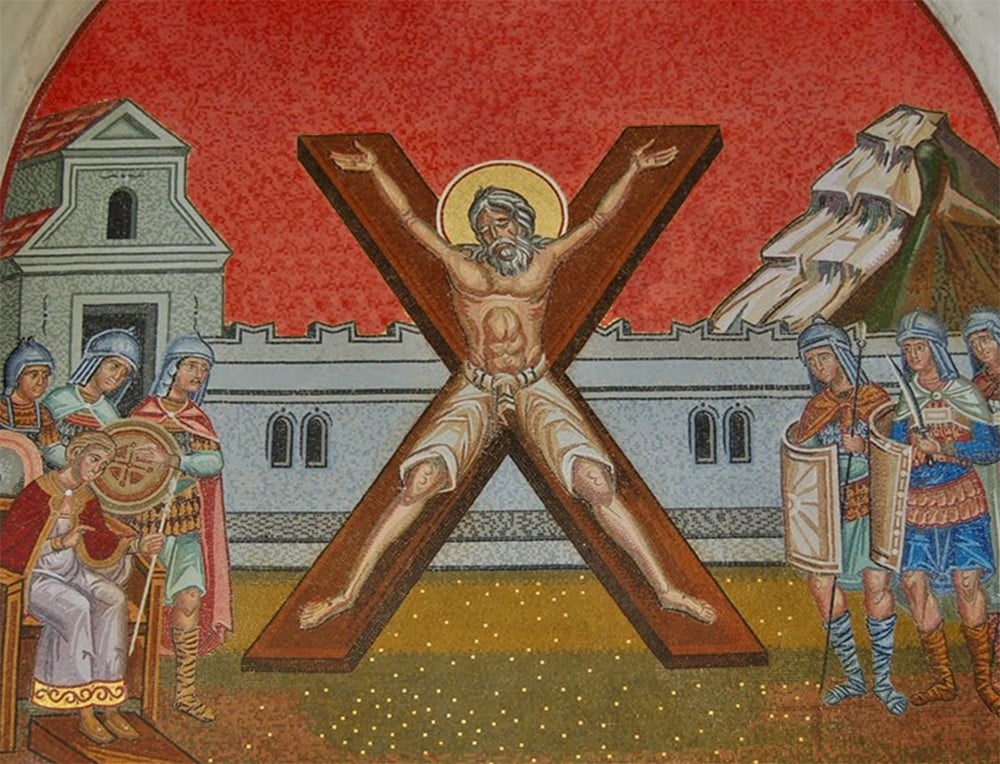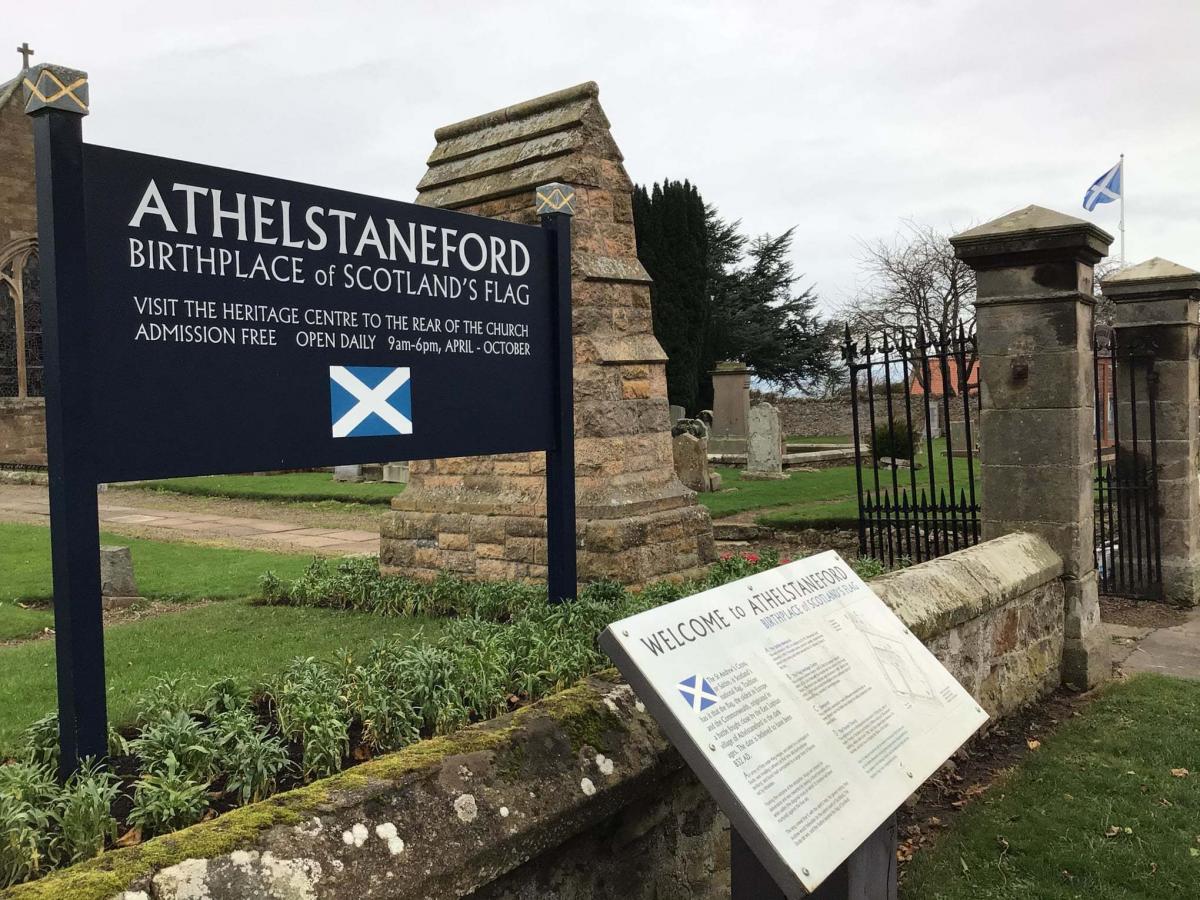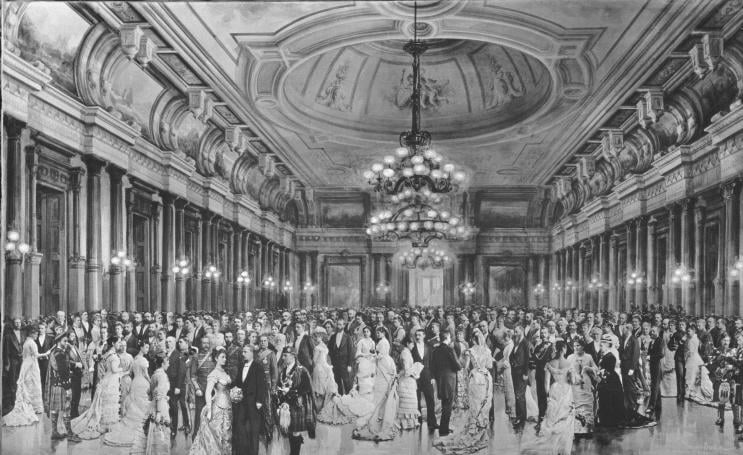Why Saint Andrew is the Patron Saint of Scotland
For those who don't know, Saint Andrew was one of the 12 Apostles of Jesus Christ. A fisherman from Galilee, he was the brother of Simon Peter - ie. Saint Peter, founder of the Church and considered the first Pope. The Bible says that Andrew introduced Peter to Jesus.
Andrew was crucified by the Romans on November 30, 60 AD. However, the apostle did not believe he was worthy to die in the same manner as Jesus. He therefore asked to be crucified on a diagonal cross. Should be pretty obvious why this will be important to our discussion.
Over time, Andrew became the patron saint of fishmongers, singers, spinsters, maidens and more. He was considered good to call upon for help with sore throats or gout. Worried about witches? Just carve a St. Andrews cross into the wall near your hearth, and they won’t be able to climb down your chimney.
Most importantly, it seems that Andrew was regarded as the ultimate missionary. And what St. Peter accomplished in the west, Andrew accomplished in the east, ie. founding the Orthodox church. Several regions of Europe maintain legends of Andrew bringing the faith to their lands. The most important may be him traveling up the Dnieper River to the future site of Kyiv.
As for Scotland, some stories have Andrew himself somehow traveling to ancient Fife and establishing a church there – the site later becoming St Andrews Cathedral and the town of St. Andrews.
Another legend, written down more or less as historical fact, tells us that rather than the saint himself, it was a pious monk called Regulus who founded the church. One version says Regulus fled from Greece to Scotland with the bones of Saint Andrew in 345 AD. Proof? Of course not. As far as we know, the historic Regulus was an Irish monk expelled from Ireland with Columba around 573 – 600 AD. He was later canonized as St. Rule.
Harder evidence suggests it is more likely that some relics of St. Andrew were originally in the collection of a man named Acca, an eighth century bishop of Hexham in Northumbria. And that it was Acca who founded the church in Fife.

The Legend of King Angus and the Saltire
Andrew’s presence can be felt all over Scotland. Several relics associated with Andrew are housed at St Mary's Metropolitan Cathedral in Edinburgh, if you care to go see them. But the most obvious sign of devotion to him is the ancient flag of Scotland itself.
‘Saltire’ is actually a heraldic term for any X-shaped cross. THE Saltire, the national flag of Scotland, gets its nickname from this shape. It is among the oldest national symbols in Europe.
As shown earlier, Andrew was crucified on such a cross in the 1st century AD. But the familiar white X on a blue background has its very own legend.
In the year 832 AD, a pitched battle was fought in East Lothian. Picts and Scots under Angus mac Fergus, High King of the Picts, faced off against a larger force of Angles and Saxons. The Albannach army was trapped in marshy ground near the river Peffer known as the Bloody Lands.

Fearing the outcome of the battle, King Angus led prayers for deliverance. He was rewarded by seeing a cloud formation of a white saltire in the clear blue sky. The king vowed that if he gained the victory, Andrew would be the patron saint of his people. Angus did win. So when the Picts and Scots united to form the kingdom of Scotland, Andrew did indeed become their patron saint.
Images of St. Andrew with, or on, his cross appear in Scotland as early as 1180 during the reign of King William I. Andrew may also be seen on official seals dating to the late 13th century. In 1320, his legendary visit to Fife is recounted in the Declaration of Arbroath. This famous and profound document formally established Scotland’s commitment to independence from England by asking for recognition from the Pope:
… our Lord Jesus Christ, after His Passion and Resurrection, called [the Scots] even though settled in the uttermost parts of the earth, almost the first to His most holy faith. Nor would He have them confirmed in that faith by merely anyone but by the first of His Apostles - by calling … the most gentle Saint Andrew, the Blessed Peter's brother, and desired him to keep them under his protection as their patron forever.
Scottish soldiers fighting in France in the 14th century wore a white saltire on their tunics - perhaps the earliest confirmed use of the symbol in a military context. The earliest print image of a St. Andrew’s cross flag appears in the 1503 Vienna Book of Hours. But in this depiction the white cross is on a red field. Use of a blue field is just about as old, appearing in Sir David Lyndsay of the Mount's Register of Scottish Arms in 1542.
Of course we all know a few years later in 1606 the Saltire was incorporated into the first Union flag, the invention of King James VI of Scotland, now also King James I of England.
The Union flag was the official flag of Scotland, flown on all government buildings with a flag pole. However, in 2002 the Scottish parliament stipulated that the Saltire be flown instead.

How Do You Celebrate St. Andrew's Day?
The feast day of Saint Andrew is November 30th and marks the anniversary of his death. Not unlike St Pat’s in Ireland or St David’s Day in Wales, it is Scotland's official “National Holiday” and as such was designated a bank holiday in 2006 by the Scottish Parliament.
Also known as Andermas, records of the Feast in Scotland date back as far as the reign of King Malcolm III in the 11th century (1034–1093). According to some tradition, the ritual slaughter of animals usually associated with Samhain was moved to this later date as a means of ensuring enough animals were kept alive for winter. Not to mention the usual attempts to deflate the popularity of a pagan festival.
Nowadays, St. Andrew’s Day is generally considered the start of the winter festival season which peaks with Hogmanay and ends with Burns Night. In the town of St Andrews, and in some other Scottish cities, the celebrations can last for days! Events include ceilidhs, concerts, and parades - including some stunning torch-lit parades.
But what might surprise you is that the idea of celebrating November 30th secularly was not started in Scotland, but by a group of Scottish immigrants in the American colonies. These folks were keen to reconnect with their roots in the old country. Did I say folks? Well, technically they were wealthy landowners and merchants.
The first recorded celebration dates to 1729, hosted by the St Andrew’s Society of Charleston, South Carolina. Not to be outdone, Philadelphia followed, setting up a Society in 1747. New Yorkers founded theirs in 1756. This organization is actually the oldest registered charity in New York City.
And that’s an important point actually. You see, in a time before the insurance industry, people often relied upon mutual aid societies for support in hard times. These clubs could be very simple and locally based. They might be united by a common trade, or as in our case, a common ethnic background. The society would pool funds and hold them in reserve to help members’ families with things like funeral costs and providing for the bereaved after a member passed. Or sometimes helping young men gain business connections or education. Naturally, they also functioned as a social outlet.
As the years passed and more of the St. Andrews Society members accumulated generational wealth, the organizations turned their attention more and more to education and community outreach. For instance, the Philadelphia St. Andrew’s Society provides a Scholarship program designed to “foster better understanding and relations between the United States and Scotland…”
Each year, a small group of American students funded by the Society go to study at the Universities of Aberdeen, Edinburgh, Glasgow, or St. Andrew’s.
These Societies also work to preserve the histories and stories of the Scottish families in their regions. And besides St. Andrew’s Day, they host events throughout the year. Definitely worth checking out.
So….can you celebrate St. Andrew’s Day? Of course! Saint Andrews Societies as well as some churches and other organizations across the USA host a variety of events. Odds are there is one happening near you. Formality will vary, but in most cases these are very elegant occasions. You can expect a festive evening of fine dining with Scottish music, dance and good cheer. Usually these events are more formal than a Burns Night supper. You can watch our video on that for more.
If you feel an especially strong sense of national pride or devotion, you can always add the St. Andrew tartan to your kilt collection. It is a timeless favorite for anyone proud of their Scottish heritage, and an especially strong option for those who do not have a clear clan connection.
Of course, there’s nothing saying you can’t celebrate the day in the comfort of your own home. Host a dinner, go out, or even just raise a wee dram to old Alba. If you love Scotland, this day is for you.
We'd be honored if you would consider our Celtic Home Goods for decorating for the ocasion!



